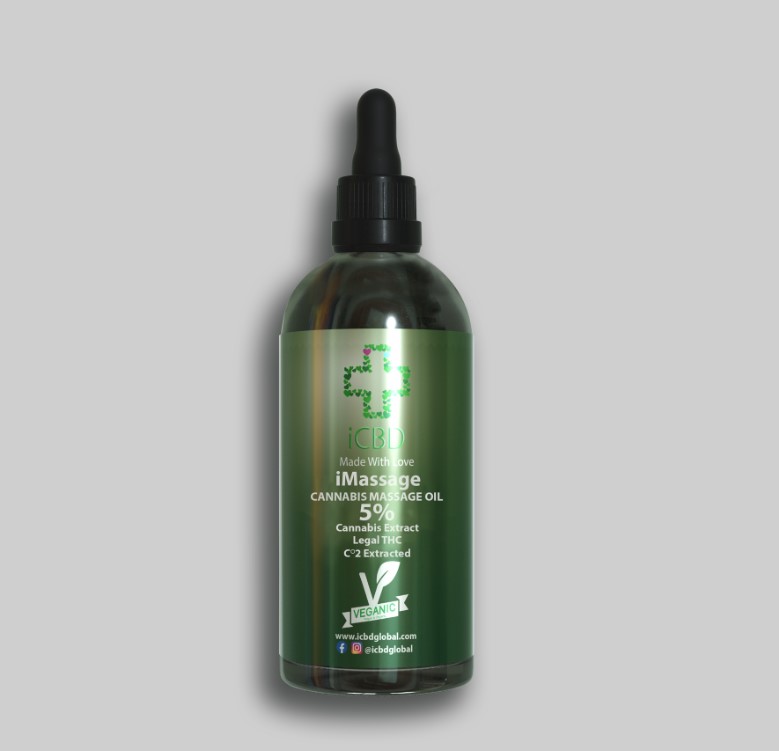Exploring topical CBD applications for localized pain relief
29 May 2023
Cannabidiol, often referred to as CBD, has been gaining prominence due to its potential medicinal properties, including its ability to alleviate pain.
Derived from the hemp plant, a cousin of the marijuana plant, CBD is a naturally occurring compound that's used in products like oils, topicals, and edibles to impart a feeling of relaxation and calm. Unlike its cousin delta-9-tetrahydrocannabinol (THC), which is the major active ingredient in marijuana, CBD is not psychoactive.
This means that it does not cause the "high" associated with marijuana, making it an appealing option for those who are looking for pain relief without the mind-altering effects of marijuana or certain pharmaceutical drugs.
Understanding CBD: What It Is and How It Works
CBD is one of over a hundred "phytocannabinoids," which are unique to cannabis and endow the plant with its robust therapeutic profile.
When introduced into the body, CBD interacts with our endocannabinoid system, a complex network of receptors and neurotransmitters that regulate various physiological processes such as pain, mood, appetite, sleep, and immune response.
CBD primarily interacts with the CB1 and CB2 receptors in this system. While it doesn't bind directly to these receptors, it influences them to use more of the body's naturally produced endocannabinoids, leading to a variety of health benefits.
In essence - when You are giving CBD to Your body, You are giving it the correct fuel to run in the best way. Even further, similar fuel exists in the body already, it just needs some stimulation!
The Endocannabinoid System: A Primer
 CBD and humans are actually similar - who would have known?
CBD and humans are actually similar - who would have known?
The ECS is composed of endocannabinoids (naturally produced compounds in the body that resemble cannabinoids), receptors in the nervous system and around the body that endocannabinoids and cannabinoids bond with, and enzymes that help break down endocannabinoids and cannabinoids.
The two key endocannabinoids are anandamide and 2-arachidonoylglycerol (2-AG), while the two main receptors are CB1, which is predominantly present in the nervous system, and CB2, which is found in the peripheral nervous system and immune cells.
How CBD Interacts with the Endocannabinoid System
Unlike THC, which binds directly with CB1 receptors, CBD does not bind strongly with either CB1 or CB2 receptors. Instead, it works by preventing the breakdown of your body's own endocannabinoids, thereby allowing them to have more of an effect.
It also interacts with a wide variety of other receptors in the body, such as the serotonin receptor 5-HT1A (which plays a role in pain perception and mood) and the vanilloid receptor TRPV1 (which is involved in mediating pain signals).
CBD and Its Anti-Inflammatory Properties
 CBD can offer a quick remedy for inflammation.
CBD can offer a quick remedy for inflammation.
One of the key therapeutic properties of CBD is its ability to reduce inflammation. This is largely due to its interaction with the CB2 receptors in the immune cells.
When CBD signals these receptors, it can reduce cytokine production, thereby reducing inflammation. This property makes CBD beneficial for conditions like arthritis, where inflammation plays a key role in causing pain.
The Role of CBD in Pain Perception
CBD's interaction with the ECS and other key receptors can influence our pain perception.
By interacting with the TRPV1 receptors, for instance, CBD can desensitize these pain receptors, thereby reducing the pain signals sent to the brain.
Additionally, by reducing inflammation, CBD can alleviate the pain associated with conditions like arthritis.
Studies Supporting CBD's Effectiveness for Pain Relief
 More and more studies are coming out about CBD's effectiveness to fight pain.
More and more studies are coming out about CBD's effectiveness to fight pain.
Numerous studies have shown promising results for the use of CBD in pain relief.
For instance, a 2018 review looked at numerous studies from 1975 to March 2018 and found that CBD was effective in overall pain management without adverse side effects.
It was also found to be particularly effective in managing chronic pain, including the pain associated with arthritis and multiple sclerosis.
Comparing CBD to Traditional Pain Relief Methods
While traditional pain relief methods, such as over-the-counter and prescription drugs, can be effective, they often come with a risk of side effects and addiction.
CBD, on the other hand, has been found to be well-tolerated and doesn't carry the same risk of addiction.
Topical CBD: A Closer Look
 iMuscle is one of our top-performing topical CBD products.
iMuscle is one of our top-performing topical CBD products.
Topical CBD oil is a product infused with CBD that is applied directly to the skin. It's a popular choice for individuals seeking localized relief, as it allows for direct application to affected areas.
The Benefits of Topical CBD Application
 Applying topical CBD can offer immediate relief from pain.
Applying topical CBD can offer immediate relief from pain.
Topical CBD is primarily used for its potential to relieve pain and inflammation.
It's often used for conditions like arthritis, muscle pain, and skin conditions like eczema and psoriasis. Because it's applied directly to the area in need, it can provide targeted relief.
Additionally, because it doesn't enter the bloodstream, it won't have the broader effects that oral CBD can have, which some people prefer.
How Topical CBD Works for Localized Pain Relief
When applied to the skin, CBD interacts with the endocannabinoid receptors on the skin's surface.
This interaction helps to reduce inflammation and pain in the localized area.
It's important to note that the skin acts as a barrier, so only a certain amount of CBD will penetrate the skin, even with topical application.
The Bioavailability of Topical CBD: What the Research Says
 We like our proof scientifically backed. Luckily, more and more findings about the amazing benefits of CBD are coming to the surface!
We like our proof scientifically backed. Luckily, more and more findings about the amazing benefits of CBD are coming to the surface!
Bioavailability refers to the amount of CBD that actually enters your bloodstream and can produce an effect.
The bioavailability of topical CBD is generally lower than that of other forms of CBD because it has to penetrate the skin barrier.
However, for localized pain and inflammation, this isn't necessarily a drawback, as CBD is intended to interact with receptors in the skin, not the bloodstream.
Using Topical CBD for Different Types of Pain
Topical CBD oil can be used for a variety of different types of pain.
- Arthritis
- Joint pain
- Back pain
- Muscle injuries
- Recovering after physical exercise
- Neuropathic pain
- Skin conditions
- Temporomandibular Disorders (TMD)
- Menstrual Cramps
CBD for Arthritis and Joint Pain
Several studies have shown promising results for the use of CBD in relieving arthritis pain.
One study found that topical CBD application has therapeutic potential for relief of arthritis pain-related behaviors and inflammation without evident side effects.
CBD for Muscle Soreness and Sports Injuries
 We have all been there - wanting to exercise or get back to our beloved sport but nagging injuries keep us from doing what we like. CBD can help!
We have all been there - wanting to exercise or get back to our beloved sport but nagging injuries keep us from doing what we like. CBD can help!
Topical CBD is also popular among athletes for muscle soreness and sports injuries. It helps reduce inflammation and pain in the muscles.
Read our blog post with BJJ legend Chris Newman about using CBD for recovery.
CBD for Neuropathic Pain
Neuropathic pain is a complex, chronic pain state that usually is accompanied by tissue injury.
CBD has shown promise in managing this type of pain, potentially due to its interaction with the endocannabinoid system and other pain-regulating receptors.
How to Use Topical CBD
Using topical CBD oil is straightforward.
Simply apply it to the affected area and rub it in.
The amount you'll need will depend on the concentration of the CBD oil and the severity of your condition.
Start with a lower dose and gradually work Your way up to the desired effect.
Choosing the Right CBD Product for You
When choosing a CBD product, it's important to consider the concentration of CBD, the other ingredients in the product, and the type of product (e.g., cream, gel, lotion). You should also look for products that have been third-party tested to ensure quality and purity.
All iCBD Global's products are lab tested, organic, environmentally friendly, and vegan.
iCBD Global is a responsible company and always goes the extra mile when choosing each ingredient for CBD Oil. The CBD oil for our products is sourced from organic Cannabis plants. Therefore, the final composition is free from harmful elements such as pesticides, herbicides, other chemical amplifiers, and fertilizers. Allowing users to enjoy a 100% organic and ethical supplement without harming their health or our planet.
Check out our topical CBD products here.
How to Apply Topical CBD for Maximum Effectiveness
 There are some simple steps You can take in order for the topical CBD to work its magic even better!
There are some simple steps You can take in order for the topical CBD to work its magic even better!
For maximum effectiveness, you should clean the area first with soap and water.
Then, apply a generous amount of the product and rub it in thoroughly.
You may need to reapply the product every few hours, depending on your condition.
Potential Side Effects and Precautions
While CBD is generally well-tolerated, it can cause side effects in some people, such as skin irritation or allergic reactions.
Potential Developments in CBD Products and Delivery Methods
As the CBD industry continues to grow, we can expect to see new developments in CBD products and delivery methods. This could include more effective topical CBD products or new methods of enhancing the bioavailability of CBD.
Exciting times are ahead!
Team iCBD Global









